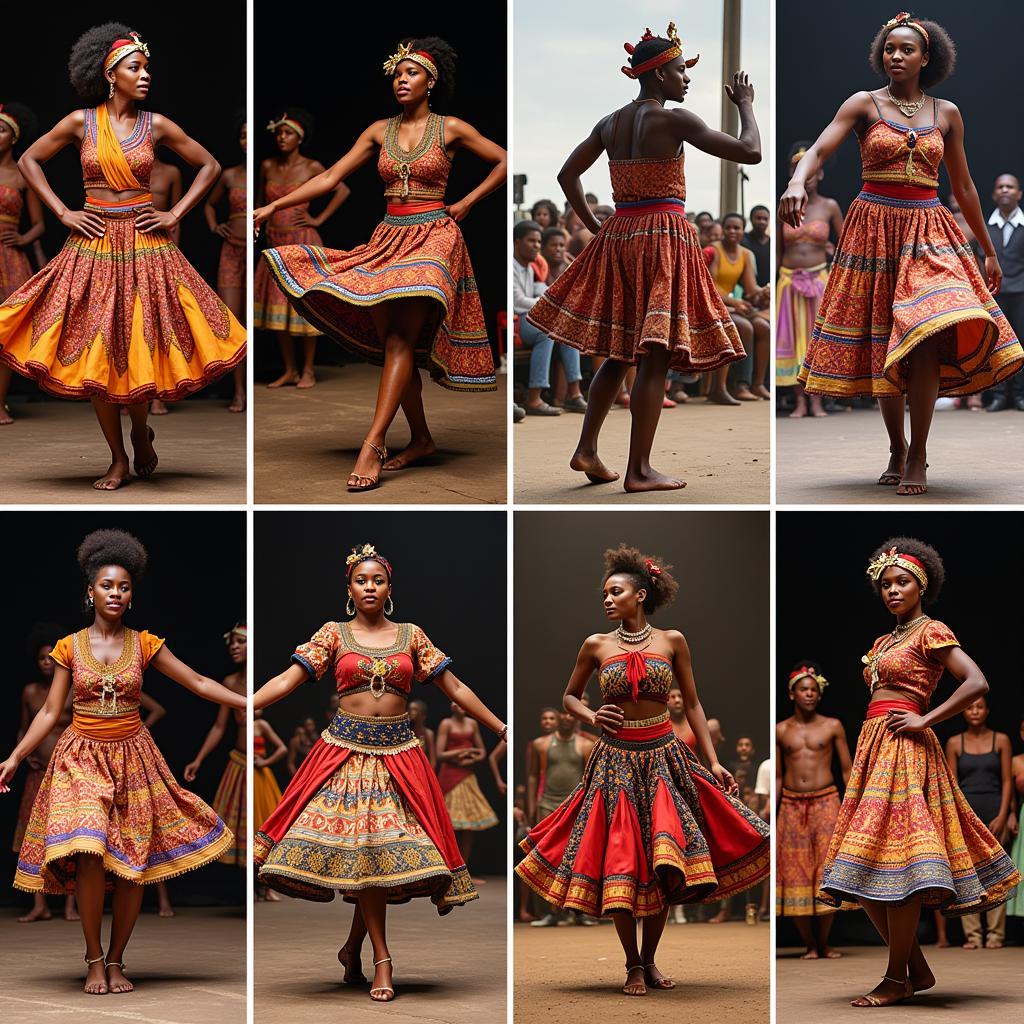Unlocking the Wonders of Africa: Your Guide to the African ABC
Africa is a vast and diverse continent, brimming with vibrant cultures, captivating stories, and rich traditions. But it can be overwhelming to grasp the intricate tapestry of African life without a proper guide. This article aims to provide you with a comprehensive introduction to the African alphabet, its history, and how it reflects the essence of African heritage.
The Beginnings: Tracing the Roots of the African ABC
The African alphabet didn’t emerge overnight. Instead, its story is a rich tapestry woven from the contributions of various civilizations across the continent. Let’s embark on a journey to explore the fascinating roots of African writing systems:
Ancient Egyptian Hieroglyphs: The First Steps
The earliest recorded writing system in Africa dates back to ancient Egypt, with hieroglyphs emerging around 3000 BC. These intricate pictograms and ideograms, often carved on stone monuments, provided a powerful means of preserving knowledge and history. While hieroglyphs were primarily used for religious and official purposes, they laid the foundation for subsequent African writing systems.
The Ge’ez Script: A Vital Bridge to Literacy
In the 4th century AD, the Ge’ez script originated in Ethiopia. This alphabetic system, based on the South Semitic scripts, became the backbone of written languages like Amharic and Tigrinya. The Ge’ez script played a vital role in promoting literacy and preserving cultural heritage, particularly in the Horn of Africa.
The Nsibidi System: A Visual Language of the Igbo
Moving west to the heart of Nigeria, we encounter the Nsibidi script, a complex system of symbols used by the Igbo people. This unique script, often inscribed on palm fronds or gourds, communicated messages ranging from everyday interactions to complex spiritual concepts. Nsibidi serves as a potent reminder of the multifaceted ways African cultures have utilized visual language for expression.
The Berber Tifinagh Script: A Living Legacy
In the north of Africa, the Berber Tifinagh script holds a special place. Used by the Berber people for centuries, this alphabet has faced various challenges but remains a vital link to cultural identity. Tifinagh continues to evolve, with modern variations adapted for digital communication and education.
Beyond the Alphabet: Unveiling the Essence of African Culture
The African alphabet is not just a tool for writing; it’s a portal to understanding the rich tapestry of African culture. Let’s dive into the depths of African expression, drawing connections between the alphabet and the diverse facets of African Life:
Art: From Ancient Artifacts to Contemporary Expressions
African art is a vibrant and dynamic field, reflecting the continent’s diverse cultural heritage. From ancient rock paintings to modern sculptures and installations, African art often draws inspiration from symbols and patterns rooted in traditional knowledge systems. The African alphabet, with its intricate forms and meanings, plays a role in shaping these artistic expressions.
Music: Rhythms and Melodies of the Soul
Music is an integral part of African culture, serving as a unifying force and a powerful mode of storytelling. The rhythms and melodies of African music often reflect the cultural nuances and historical contexts that have shaped the continent’s diverse musical traditions. The African alphabet, with its linguistic diversity, serves as a foundation for the varied musical expressions found across the continent.
Food: A Feast for the Senses
African cuisine is a sensory experience, showcasing the diversity of agricultural practices and culinary traditions found across the continent. From the aromatic spices of North Africa to the rich stews of West Africa, African food is a celebration of cultural exchange and a reflection of the unique ingredients available in each region.
Folklore: Tales that Unite Generations
African folklore is a treasure trove of stories, myths, and legends that have been passed down through generations. These narratives often feature characters and themes related to the natural world, social structures, and spiritual beliefs. The African alphabet, with its rich linguistic heritage, has played a vital role in preserving and transmitting these tales, ensuring their survival for future generations.
The Future of the African Alphabet: A Path Towards Empowerment
The African alphabet is more than just a collection of letters. It’s a symbol of resilience, a testament to the ingenuity of African cultures, and a powerful tool for empowerment. As Africa continues to embrace its rich heritage, the alphabet plays a crucial role in:
Promoting Education and Literacy: A Foundation for Growth
Access to literacy is essential for individual and societal development. By promoting the use of African languages and alphabets in education, we can empower future generations with the tools they need to thrive.
Preserving Cultural Heritage: Safeguarding the Past, Shaping the Future
The African alphabet is a cornerstone of cultural preservation. By using it to document and share traditional knowledge, languages, and practices, we can safeguard the legacy of our ancestors for generations to come.
Fostering Global Understanding: Bridging Cultures Through Language
The African alphabet provides a bridge to understanding the diverse cultures and perspectives of the continent. By embracing this language, we can foster a more inclusive and equitable global community.
Conclusion: Unlocking the Mysteries of the African ABC
The African alphabet is a key to unlocking the mysteries of the continent’s rich and diverse culture. By embracing its history, understanding its significance, and promoting its use, we can celebrate the ingenuity of African cultures, empower future generations, and foster a more inclusive global community.
Let’s continue to explore the wonders of the African alphabet, allowing it to guide us on a journey of discovery and appreciation for the vibrant heritage of Africa.
FAQ
Q: What is the most widely spoken language in Africa?
A: Arabic is the most widely spoken language in Africa, with over 300 million speakers.
Q: How can I learn more about the African alphabet?
A: There are many resources available online and in libraries to learn more about the African alphabet. You can explore websites dedicated to African languages, find books on African writing systems, and connect with experts in African linguistics.
Q: Is the African alphabet used in education?
A: In many African countries, the African alphabet is used in education, particularly in teaching indigenous languages. However, the extent of its use varies depending on the region and educational policies.
Q: What are some examples of African literature written in the African alphabet?
A: There are many examples of African literature written in the African alphabet. You can find works of fiction, poetry, and non-fiction written in languages like Amharic, Swahili, and Yoruba.
Q: What are some ways to support the preservation of the African alphabet?
A: Supporting the preservation of the African alphabet can involve promoting its use in education, advocating for government policies that promote indigenous languages, and engaging with organizations dedicated to language revitalization.

